The guitar, with its versatile strings and captivating melodies, has captivated audiences worldwide, becoming a staple in various musical genres and cultures.
From the soulful strumming of folk ballads to the electrifying riffs of rock anthems, the guitar’s expressive range has inspired countless musicians and music lovers alike.
Join us on a captivating journey through the world of guitars, exploring the diverse array of types, each with its unique sound, playing style, and historical significance.
We’ll delve into the intricacies of acoustic guitars, unravel the electrifying world of electric guitars, and discover the rich heritage of guitars from around the globe.
Types Of Guitars
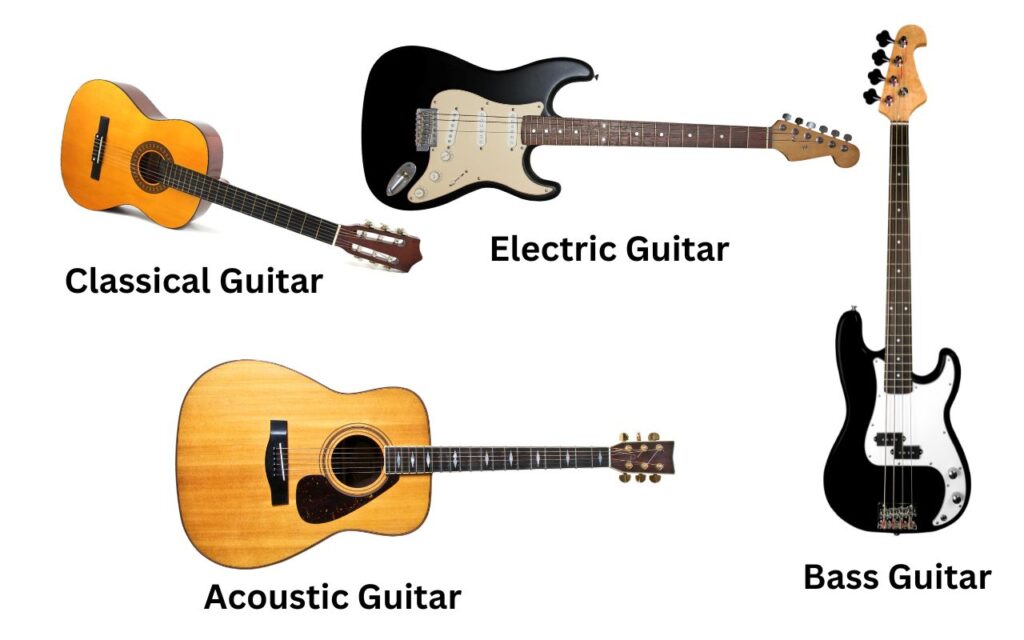
Below is a summary of the different types of guitars and stringed instruments:
| Type of Guitar | Category | Suitable for Beginners? |
|---|---|---|
| Classical Guitar | Acoustic | Yes |
| Steel-String Acoustic Guitar | Acoustic | Yes |
| Resonator Guitar | Acoustic | No |
| Electro-Acoustic Guitar | Acoustic | Yes |
| Solid-Body Electric Guitar | Electric | Yes |
| Semi-Hollow or Hollow-Body Electric Guitar | Electric | No |
| Archtop Electric Guitar | Electric | No |
| Four-String Bass Guitar | Electric | No |
| Five-String Bass Guitar | Electric | No |
| Ukulele | Other Stringed Instruments | Yes |
| Lap Steel Guitar | Other Stringed Instruments | No |
| Steel Guitar | Other Stringed Instruments | No |
| Banjo | Other Stringed Instruments | Yes |
| Mandolin | Other Stringed Instruments | Yes |
| Charango | Other Stringed Instruments | Yes |
| Guqin | Other Stringed Instruments | No |
| Sitar | Other Stringed Instruments | No |
| Bouzouki | Other Stringed Instruments | Yes |

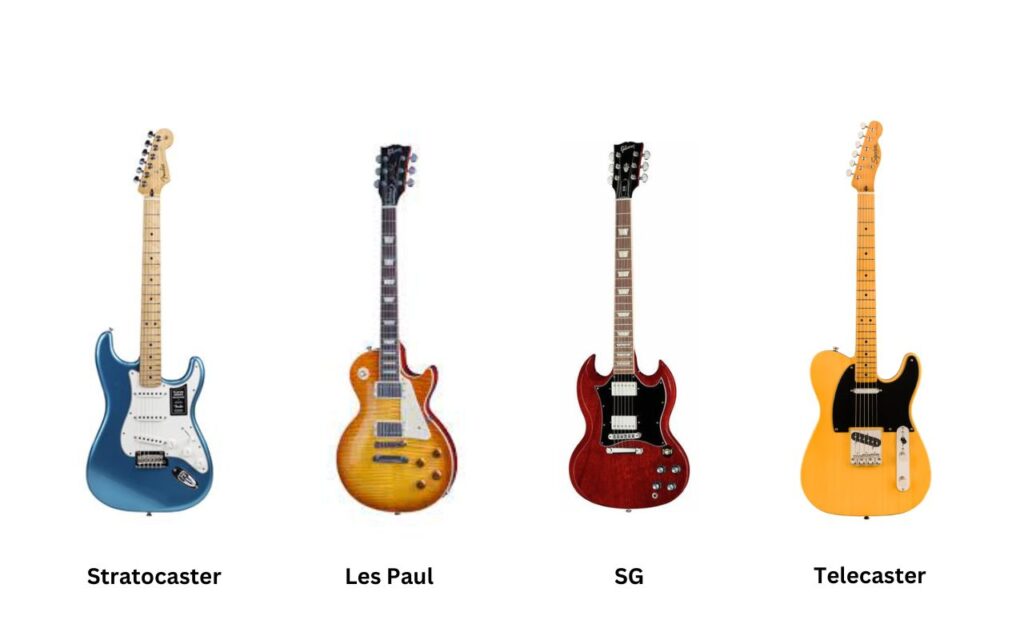
Note: Not all instruments are suitable for all beginners. Some instruments, such as the resonator guitar, solid-body electric guitar, archtop electric guitar, four-string bass guitar, five-string bass guitar, lap steel guitar, steel guitar, guqin, and sitar, may be more challenging for beginners due to their size, string tension, or specialized techniques. It is always a good idea to consult with a guitar teacher or experienced player to find the right instrument for your level and musical goals.
Let’s talk about the 15 most popular types of guitars.
1. Classical Guitar
The classical guitar, a member of the guitar family, is characterized by its nylon strings, wide neck, and flat top body. It is known for its mellow, warm tone and is often used for fingerstyle playing and classical music.

Classical guitars are versatile instruments and can be used to play a wide variety of music genres, including:
- Classical music:
The classical guitar is the quintessential instrument for classical music, and its repertoire spans centuries of composition. - Flamenco:
Flamenco music is a passionate and expressive style of Spanish music that is typically played on classical guitars. - Fingerstyle:
Fingerstyle playing involves using all fingers of the right hand to pluck the strings, creating intricate and beautiful melodies and harmonies. - Folk music:
Classical guitars are often used in folk music, such as American folk, Celtic folk, and Latin American folk. - Jazz:
Classical guitars have also found a place in jazz music, particularly in the styles of smooth jazz and bossa nova.
Classical guitars are suitable for players of all levels, from beginners to experienced professionals. The wide neck and nylon strings can be challenging for beginners to get used to, but with practice, anyone can learn to play the classical guitar.
Classical guitars range in price from around $50 for an entry-level beginner model to over $10,000 for a high-end professional model. The price of a classical guitar depends on a number of factors, including the quality of the wood, the craftsmanship, and the brand.
Here is a table summarizing the key information about classical guitars:
| Feature | Details |
|---|---|
| Type of guitar | Acoustic |
| Strings | Nylon |
| Neck | Wide |
| Body | Flat top |
| Tonality | Mellow, warm |
| Styles of music | Classical, flamenco, fingerstyle, folk, jazz |
| Level of players | All levels |
| Typical price range | $50 – $10,000 |
2. Steel-String Acoustic Guitar
The steel-string acoustic guitar, a member of the guitar family, is characterized by its metal strings, narrower neck, and a variety of body shapes. It is known for its brighter, more percussive sound and is commonly used in folk, country, and rock music.

Steel-string acoustic guitars are versatile instruments and can be used to play a wide variety of music genres, including:
- Folk music:
Steel-string acoustic guitars are the quintessential instruments for folk music, and their repertoire spans centuries of composition. - Country music:
Country music is heavily influenced by the steel-string acoustic guitar, and its sound is synonymous with the genre. - Rock music:
Steel-string acoustic guitars have been used in rock music since its inception, and they are still a popular choice for rock and roll, blues, and singer-songwriter styles. - Bluegrass:
Bluegrass music is a high-energy style of American folk music that is typically played on steel-string acoustic guitars. - Pop music:
Steel-string acoustic guitars are often used in pop music, particularly in the styles of acoustic pop and folk-pop.
Steel-string acoustic guitars are suitable for players of all levels, from beginners to experienced professionals. The narrower neck and metal strings make them easier to play than the classical guitar, and the variety of body shapes and sounds allows beginners to find a guitar that suits their style.
Steel-string acoustic guitars range in price from around $50 for an entry-level beginner model to over $2,000 for a high-end professional model. The price of a steel-string acoustic guitar depends on a number of factors, including the quality of the wood, the craftsmanship, and the brand.
You can also check out our blog on the best acoustic guitars under 10000 rupees.
Here is a table summarizing the key information about steel-string acoustic guitars:
| Feature | Details |
|---|---|
| Type of guitar | Acoustic |
| Strings | Metal |
| Neck | Narrower |
| Body | Various shapes |
| Tonality | Brighter, more percussive |
| Styles of music | Folk, country, rock, bluegrass, pop |
| Level of players | All levels |
| Typical price range | $50 – $2,000 |
3. Resonator Guitar
The resonator guitar, a member of the guitar family, is characterized by its metal body and cone resonator. It is known for its distinctive, metallic twang and is often associated with blues and slide guitar playing.

Resonator guitars are versatile instruments and can be used to play a variety of music genres, including:
- Blues:
Resonator guitars are an essential part of blues music, and their twangy sound is synonymous with the genre. - Slide guitar:
Slide guitar playing involves using a slide to fret the strings, creating a smooth, wailing sound that is often used in blues and rock music. - Country music:
Resonator guitars are also popular in country music, particularly in the styles of bluegrass and country blues. - Gospel music:
Resonator guitars are often used in gospel music. - Hawaiian music:
Resonator guitars were introduced to Hawaiian music in the early 20th century, and they have become an integral part of the genre.
Resonator guitars are not as suitable for beginners as other types of guitars, such as the classical guitar or the steel-string acoustic guitar. The metal body and cone resonator makes it difficult to learn proper technique, and the slide-playing style can be challenging.
Resonator guitars range in price from around $200 for an entry-level beginner model to over $3,000 for a high-end professional model. The price of a resonator guitar depends on a number of factors, including the quality of the metal body, the craftsmanship, and the brand.
Here is a table summarizing the key information about resonator guitars:
| Feature | Details |
|---|---|
| Type of guitar | Acoustic |
| Body | Metal with cone resonator |
| Tonality | Distinctive, metallic twang |
| Styles of music | Blues, slide guitar, country, gospel, Hawaiian |
| Level of players | Intermediate to advanced |
| Typical price range | $200 – $3,000 |
4. Electro-Acoustic Guitar
The electro-acoustic guitar, a member of the guitar family, combines the acoustic sound with an electronic pickup system. This allows for amplification and versatility in performance settings.

Electro-acoustic guitars are versatile instruments and can be used to play a wide variety of music genres, including:
- Folk music:
Electro-acoustic guitars are often used in folk music, particularly in the styles of acoustic folk and Celtic folk. - Country music:
Electro-acoustic guitars are popular in country music. - Rock music:
Electro-acoustic guitars are sometimes used in rock music, particularly in the styles of acoustic rock and folk-rock. - Blues music:
Electro-acoustic guitars can be used to play blues music, but they are not as common as resonator guitars or solid-body electric guitars. - Jazz music:
Electro-acoustic guitars are sometimes used in jazz music, particularly in the styles of smooth jazz and bossa nova.
Electro-acoustic guitars are suitable for players of all levels, from beginners to experienced professionals. The pickup system can help beginners hear their mistakes more clearly, and it also allows for amplification, which can be helpful for playing in larger venues or with other musicians.
Electro-acoustic guitars range in price from around $100 for an entry-level beginner model to over $3,000 for a high-end professional model. The price of an electro-acoustic guitar depends on a number of factors, including the quality of the wood, the craftsmanship, the brand, and the features of the pickup system.
Here is a table summarizing the key information about electro-acoustic guitars:
| Feature | Details |
|---|---|
| Type of guitar | Acoustic |
| Pickup system | Yes |
| Tonality | Acoustic with amplification capabilities |
| Styles of music | Folk, country, rock, blues, jazz |
| Level of players | All levels |
| Typical price range | $100 – $3,000 |
5. Solid-Body Electric Guitar
The solid-body electric guitar, a member of the guitar family, is characterized by its solid body that minimizes feedback. It is known for its sustain and versatility, making it popular in rock, blues, and metal genres.

Solid-body electric guitars are versatile instruments and can be used to play a wide variety of music genres, including:
- Rock music:
Solid-body electric guitars are the quintessential instruments for rock music, and they have been used in every subgenre of rock, from classic rock to heavy metal. - Blues music:
Solid-body electric guitars are also popular in blues music, and they are often used to create a distorted, overdriven sound. - Funk music:
Solid-body electric guitars are an essential part of funk music, and their clean, percussive sound is synonymous with the genre. - Metal music:
Solid-body electric guitars are the dominant instrument in metal music, and they are used to create a wide range of sounds, from heavy riffs to soaring solos. - Pop music:
Solid-body electric guitars are sometimes used in pop music, particularly in the styles of rock-pop and alternative pop.
Solid-body electric guitars are suitable for beginners to some extent. The thin neck and low action can help beginners learn proper techniques and it’s easier on the fingers. However, some Electric guitars have unusual shapes and weights and are difficult to play for beginners.
Solid-body electric guitars range in price from around $100 for an entry-level beginner model to over $5,000 for a high-end professional model. The price of a solid-body electric guitar depends on a number of factors, including the quality of the wood, the craftsmanship, the brand, and the features of the pickups and electronics.
Here is a table summarizing the key information about solid-body electric guitars:
| Feature | Details |
|---|---|
| Type of guitar | Electric |
| Body | Solid |
| Tonality | Sustained, versatile |
| Styles of music | Rock, blues, funk, metal, pop |
| Level of players | Beginners to advanced |
| Typical price range | $100 – $5,000 |
6. Semi-hollow or Hollow-Body Electric Guitar
The semi-hollow or hollow-body electric guitar, a member of the guitar family, features a hollow or semi-hollow body, which offers a warmer, more resonant tone than solid-body electric guitars. It is often associated with jazz and blues music.

Semi-hollow or hollow-body electric guitars are versatile instruments and can be used to play a wide variety of music genres, including:
- Jazz music:
Semi-hollow or hollow-body electric guitars are the quintessential instruments for jazz music, and they have been used by some of the most famous jazz guitarists in history, such as Django Reinhardt, Charlie Christian, and Wes Montgomery. - Blues music:
Semi-hollow or hollow-body electric guitars are also popular in blues music, and they are often used to create a warm, soulful sound. - Rock music:
Semi-hollow or hollow-body electric guitars can be used in rock music, in the styles of blues-rock and indie rock. - Funk music:
Semi-hollow or hollow-body electric guitars are sometimes used in funk music, in the styles of smooth funk and acid jazz. - Pop music:
Semi-hollow or hollow-body electric guitars are sometimes used in pop music.
Semi-hollow or hollow-body electric guitars are not as suitable for beginners as other types of guitars, such as the classical guitar or the steel-string acoustic guitar. The hollow body makes them more susceptible to feedback, and the warm, resonant tone can be difficult to control.
Semi-hollow or hollow-body electric guitars range in price from around $300 for an entry-level beginner model to over $5,000 for a high-end professional model. The price of a semi-hollow or hollow-body electric guitar depends on a number of factors, including the quality of the wood, the craftsmanship, the brand, and the features of the pickups and electronics.
Here is a table summarizing the key information about semi-hollow or hollow-body electric guitars:
| Feature | Details |
|---|---|
| Type of guitar | Electric |
| Body | Hollow or semi-hollow |
| Tonality | Warm, resonant |
| Styles of music | Jazz, blues, rock, funk, pop |
| Level of players | Intermediate to advanced |
| Typical price range | $300 – $5,000 |
7. Archtop Electric Guitar
The archtop electric guitar, a member of the guitar family, is characterized by its curved top and hollow body, producing a rich, woody tone that is highly sought after in jazz music. Their warm, sophisticated sound blends seamlessly with other instruments in a jazz ensemble.
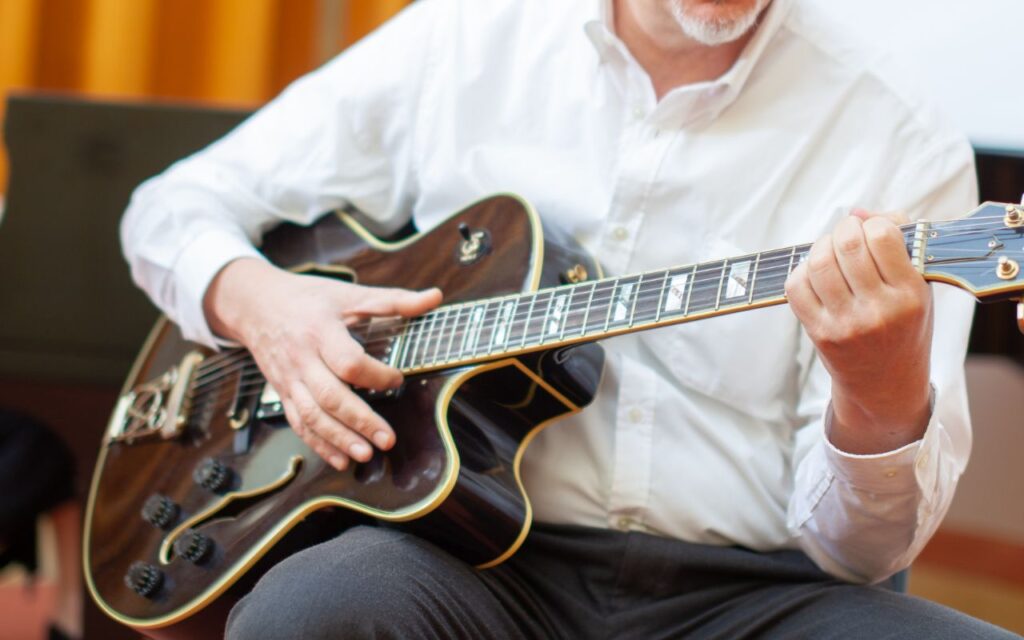
Archtop electric guitars are primarily used in jazz music, but they can also be used in other genres, including:
- Blues music:
Archtop electric guitars can be used to play blues music, particularly in the styles of urban blues and Chicago blues. - Swing music:
Archtop electric guitars were the dominant instrument in swing music, and they were used by some of the most famous swing guitarists in history, such as Charlie Christian and Django Reinhardt. - Rockabilly music:
Archtop electric guitars were also popular in rockabilly music, and they are often used to create a twangy, surf-rock sound. - Indie rock music:
Archtop electric guitars have been used by some indie rock bands, in the styles of jazz-pop and retro-rock.
Archtop electric guitars are not suitable for beginners. The curved top, hollow body, and warm tone make it a challenging instrument to learn and master.
Archtop electric guitars range in price from around $500 for an entry-level beginner model to over $10,000 for a high-end professional model. The price of an archtop electric guitar depends on a number of factors, including the quality of the wood, the craftsmanship, the brand, and the features of the pickups and electronics.
Here is a table summarizing the key information about archtop electric guitars:
| Feature | Details |
|---|---|
| Type of guitar | Electric |
| Body | Hollow with a curved top |
| Tonality | Rich, woody |
| Styles of music | Jazz, blues, swing, rockabilly, indie rock |
| Level of players | Intermediate to advanced |
| Typical price range | $500 – $10,000 |
8. Four-String Bass Guitar
The four-string bass guitar, a member of the guitar family, is characterized by its four strings tuned an octave lower than a guitar. It provides the low-end rhythm foundation for various musical styles.
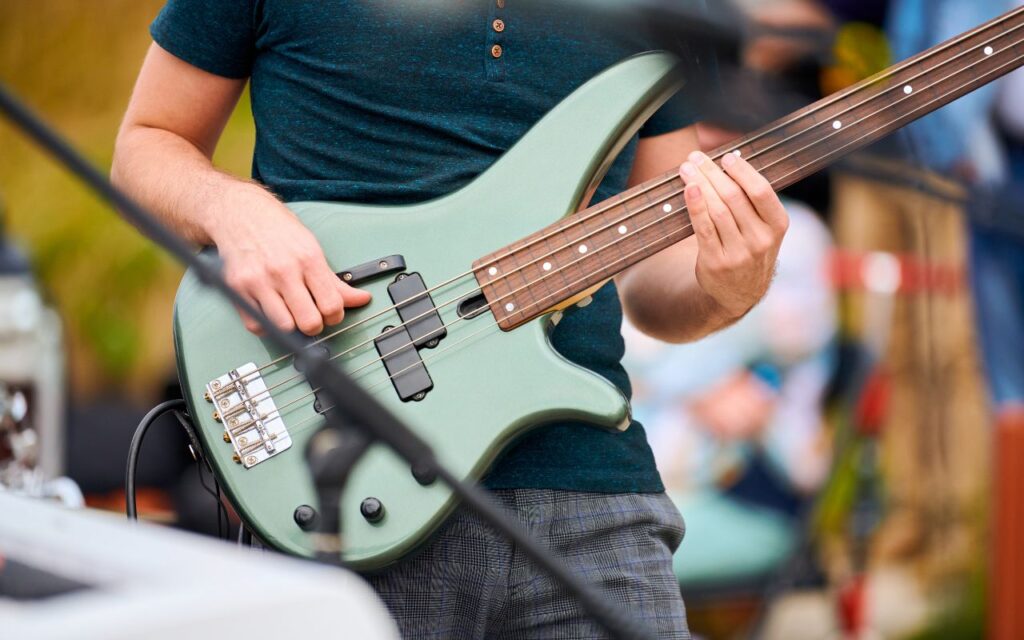
Four-string bass guitars are versatile instruments and can be used to play a wide variety of music genres, including:
- Rock music:
Four-string bass guitars are essential instruments in rock music, and they have been used in every subgenre of rock, from classic rock to heavy metal. - Pop music:
Four-string bass guitars are also popular in pop music, and they provide the low-end groove that is so important for this genre. - Funk music:
Four-string bass guitars are an essential part of funk music, and their rhythmic and percussive sound is synonymous with the genre. - Soul music:
Four-string bass guitars are also popular in soul music, and they are often used to create a smooth, soulful sound. - Jazz music:
Four-string bass guitars are used in jazz music, in the styles of fusion jazz and smooth jazz.
Four-string bass guitars are not as suitable for beginners as other types of guitars, such as the classical guitar or the steel-string acoustic guitar. The larger, heavier instrument can be difficult to handle, and the thick strings and lower tuning can be challenging to get used to.
Four-string bass guitars range in price from around $150 for an entry-level beginner model to over $2,000 for a high-end professional model. The price of a four-string bass guitar depends on a number of factors, including the quality of the wood, the craftsmanship, the brand, and the features of the pickups and electronics.
Here is a table summarizing the key information about four-string bass guitars:
| Feature | Details |
|---|---|
| Type of guitar | Electric |
| Strings | Four- tuned an octave lower than a guitar |
| Body | Solid |
| Tonality | Low, rhythmic |
| Styles of music | Rock, pop, funk, soul, jazz |
| Level of players | Intermediate to advanced |
| Typical price range | $150 – $2,000 |
9. Five-String Bass Guitar
The five-string bass guitar, an extension of the four-string bass, offers an additional low B string, expanding the instrument’s range and versatility.
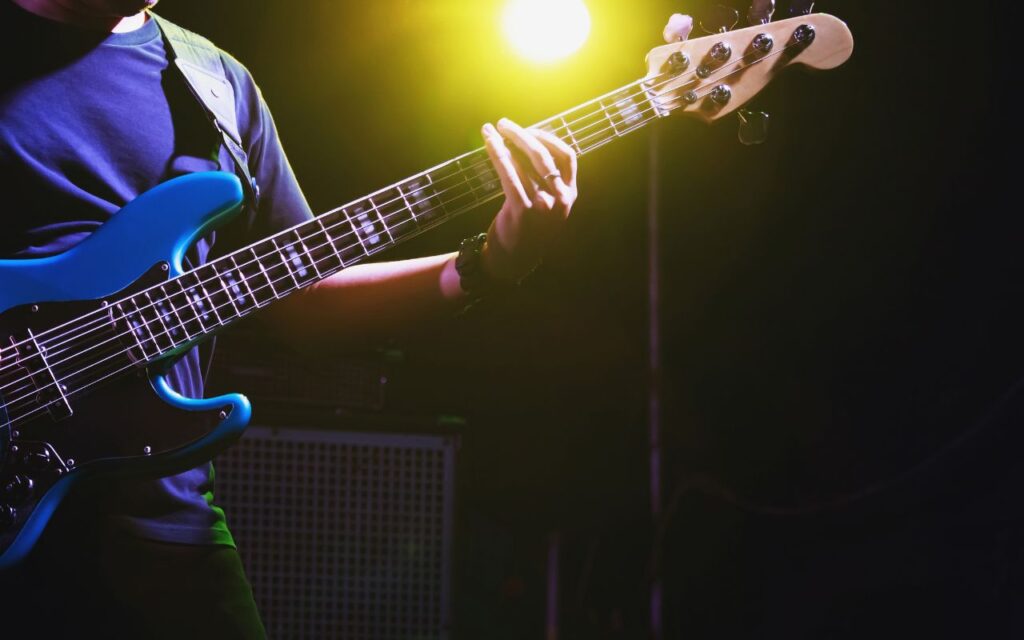
Five-string bass guitars are used in a variety of music genres, including:
- Rock music:
Five-string bass guitars are becoming increasingly popular in rock music, particularly in genres that require a wider range of notes, such as progressive rock and metal. - Fusion music:
Five-string bass guitars are also popular in fusion music, which often blends elements of jazz, rock, and funk. - Jazz music:
Five-string bass guitars are used in some styles of jazz music, particularly those that emphasize improvisation and extended techniques. - Pop music:
Five-string bass guitars are occasionally used in pop music, in styles that require a more expansive low end. - Metal music:
Five-string bass guitars are increasingly common in metal music, in genres that emphasize low tunings and complex riffs.
Five-string bass guitars are not as suitable for beginners as four-string bass guitars. The additional low B string and the wider neck can make it more challenging to handle and learn proper technique.
Five-string bass guitars range in price from around $200 for an entry-level beginner model to over $3,000 for a high-end professional model. The price of a five-string bass guitar depends on a number of factors, including the quality of the wood, the craftsmanship, the brand, and the features of the pickups and electronics.
Here is a table summarizing the key information about five-string bass guitars:
| Feature | Details |
|---|---|
| Type of guitar | Electric |
| Strings | Five, with an additional low B string |
| Body | Solid |
| Tonality | Extended low range |
| Styles of music | Rock, fusion, jazz, pop, metal |
| Level of players | Intermediate to advanced |
| Typical price range | $200 – $3,000 |
10. Ukulele
A small, four-string instrument with nylon strings, the ukulele is known for its bright, cheerful sound and is often associated with Hawaiian music and casual playing.

Ukuleles are versatile instruments and can be used to play a wide variety of music genres, including:
- Hawaiian music:
Ukuleles are the quintessential instruments for Hawaiian music, and their joyful, melodic sound is synonymous with the genre. - Pop music:
Ukuleles have become increasingly popular in pop music, with many artists incorporating their lighthearted sound into their songs. - Folk music:
Ukuleles are often used in folk music, in the styles of American folk, Celtic folk, and Latin American folk. - Children’s music:
Ukuleles are a popular choice for children’s music due to their small size, easy-to-play nature, and cheerful sound. - Jazz music:
Ukuleles are occasionally used in jazz music, in the styles of smooth jazz and bossa nova.
Ukuleles are suitable for players of all ages and skill levels. Their small size, nylon strings, and simple melodies make them an ideal instrument for beginners, while their versatility and expressive potential allow experienced players to explore a wide range of musical styles.
Ukuleles range in price from around $20 for an entry-level beginner model to over $200 for a high-end professional model. The price of a ukulele depends on a number of factors, including the quality of the wood, the craftsmanship, and the brand.
Here is a table summarizing the key information about ukuleles:
| Feature | Details |
|---|---|
| Type of guitar | Other Stringed Instruments |
| Strings | Four, made of nylon |
| Body | Small, often made of wood or plastic |
| Tonality | Bright, cheerful |
| Styles of music | Hawaiian, pop, folk, children’s, jazz |
| Level of players | All ages and skill levels |
| Typical price range | $20 – $200 |
11. Lap Steel Guitar
Played horizontally on the lap, the lap steel guitar features a solid body, multiple strings, and a bar for fretting, producing a distinctive, sliding sound often used in country and blues music.
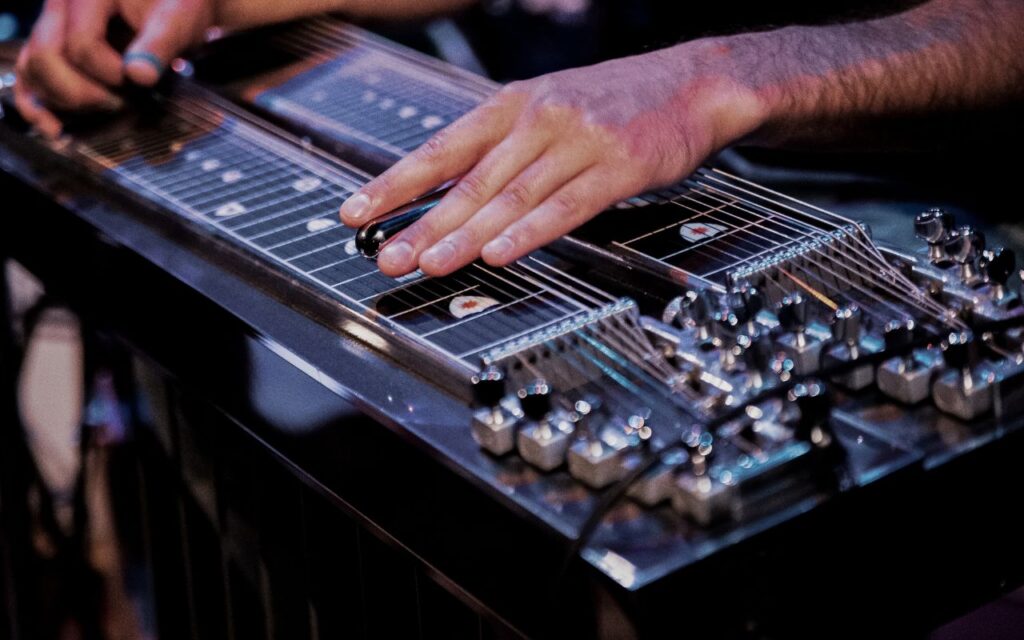
Lap steel guitars are versatile instruments and can be used to play a wide variety of music genres, including:
- Country music:
Lap steel guitars are an essential part of country music, and their wailing, pedal-bending sound is synonymous with the genre. - Blues music:
Lap steel guitars are also popular in blues music, and they are often used to create a mournful, bluesy sound. - Hawaiian music:
Lap steel guitars were introduced to Hawaiian music in the early 20th century, and they have become an integral part of the genre. - Rock music:
Lap steel guitars are sometimes used in rock music, in the styles of rockabilly and surf rock. - Jazz music:
Lap steel guitars have been used by some jazz guitarists, in the styles of Western swing and smooth jazz.
Lap steel guitars are not as suitable for beginners as other types of guitars, such as the classical guitar or the steel-string acoustic guitar. The solid body, multiple strings, and pedal-bending technique can make it challenging to learn proper technique.
Lap steel guitars range in price from around $100 for an entry-level beginner model to over $2,000 for a high-end professional model. The price of a lap steel guitar depends on a number of factors, including the quality of the wood, the craftsmanship, the brand, and the features of the pickups and electronics.
Here is a table summarizing the key information about lap steel guitars:
| Feature | Details |
|---|---|
| Type of guitar | Other Stringed Instruments |
| Strings | Multiple |
| Body | Solid |
| Fretting | Bar |
| Tonality | Distinctive, sliding |
| Styles of music | Country, blues, Hawaiian, rock, jazz |
| Level of players | Intermediate to advanced |
| Typical price range | $100 – $2,000 |
12. Pedal Steel Guitar
The pedal steel guitar, an evolution of the lap steel guitar, features a console-style body, multiple strings, and a system of pedals and knee levers that change the pitch of certain strings, enabling more complex and nuanced playing.
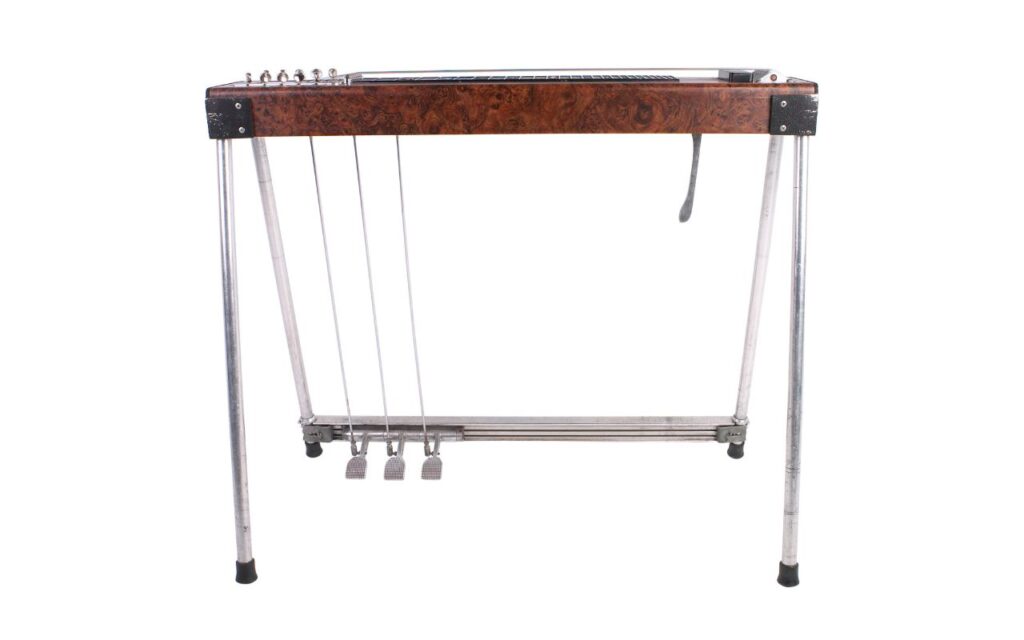
Pedal steel guitars are particularly associated with country music, where they are used to create a wide range of sounds, from mournful bluesy melodies to soaring solos. They are also used in other genres, including:
- Blues music:
Pedal steel guitars are sometimes used in blues music, particularly in the styles of contemporary blues and electric blues. - Jazz music:
Pedal steel guitars have been used by some jazz guitarists, in the styles of smooth jazz and fusion jazz. - Rock music:
Pedal steel guitars are occasionally used in rock music, in the styles of country rock and Americana. - Pop music:
Pedal steel guitars are sometimes used in pop music, in the styles of country pop and Americana.
Pedal steel guitars are among the most challenging guitars to learn and master due to their complex pedal system and intricate playing techniques. They are typically played by experienced musicians who have a deep understanding of music theory and harmony.
Pedal steel guitars range in price from around $2,000 for an entry-level professional model to over $10,000 for a high-end custom-built instrument. The price of a pedal steel guitar depends on a number of factors, including the quality of the wood, the craftsmanship, the brand, and the features of the pedals and electronics.
Here is a table summarizing the key information about pedal steel guitars:
| Feature | Details |
|---|---|
| Type of guitar | Other Stringed Instruments |
| Strings | Multiple |
| Body | Console-style |
| Fretting | Pedals and knee levers |
| Tonality | Versatile, ranging from mournful bluesy to soaring solos |
| Styles of music | Country, blues, jazz, rock, pop |
| Level of players | Experienced professionals |
| Typical price range | $2,000 – $10,000 |
13. Banjo
A stringed instrument with a circular body and a stretched skin or plastic head, the banjo is characterized by its bright, twangy sound and is often associated with bluegrass and folk music.
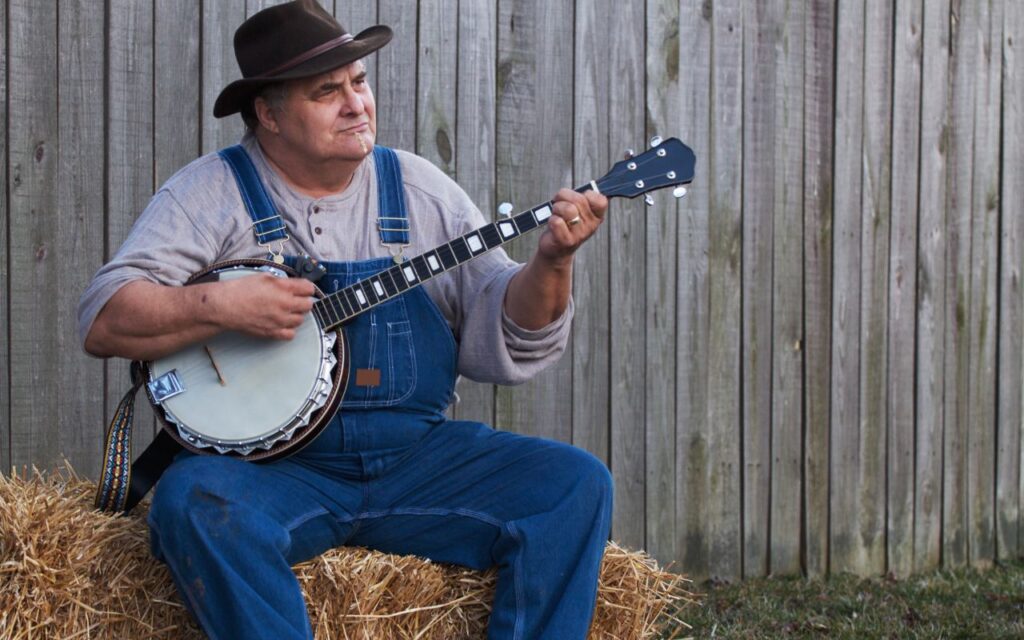
Banjos are versatile instruments and can be used to play a wide variety of music genres, including:
- Bluegrass music:
Banjos are an essential part of bluegrass music, and their driving, syncopated rhythms are synonymous with the genre. - Folk music:
Banjos are also popular in folk music, in the styles of American folk, Celtic folk, and Appalachian folk. - Country music:
Banjos were a major instrument in early country music, and they still have a place in the genre, particularly in the styles of old-time country and bluegrass-influenced country. - Jazz music:
Banjos have been used by some jazz musicians, in the styles of ragtime and Dixieland. - Pop music:
Banjos are occasionally used in pop music, in the styles of folk-pop and Americana.
Banjos are not as suitable for beginners as other types of guitars, such as the classical guitar or the steel-string acoustic guitar. The small size, short scale length, and metal strings can make it difficult to learn proper technique, and the unique fretting system can be challenging to master.
Banjos range in price from around $100 for an entry-level beginner model to over $3,000 for a high-end professional model. The price of a banjo depends on a number of factors, including the quality of the wood, the craftsmanship, the brand, and the type of resonator.
Here is a table summarizing the key information about banjos:
| Feature | Details |
|---|---|
| Type of guitar | Other Stringed Instruments |
| Strings | Four or five |
| Body | Circular, with a stretched skin or plastic head |
| Tonality | Bright, twangy |
| Styles of music | Bluegrass, folk, country, jazz, pop |
| Level of players | Intermediate to advanced |
| Typical price range | $100 – $3,000 |
14. Twelve-String Guitar
A twelve-string guitar is a steel-string guitar with 12 strings in six courses, which produces a thicker, richer sound than a standard six-string guitar.
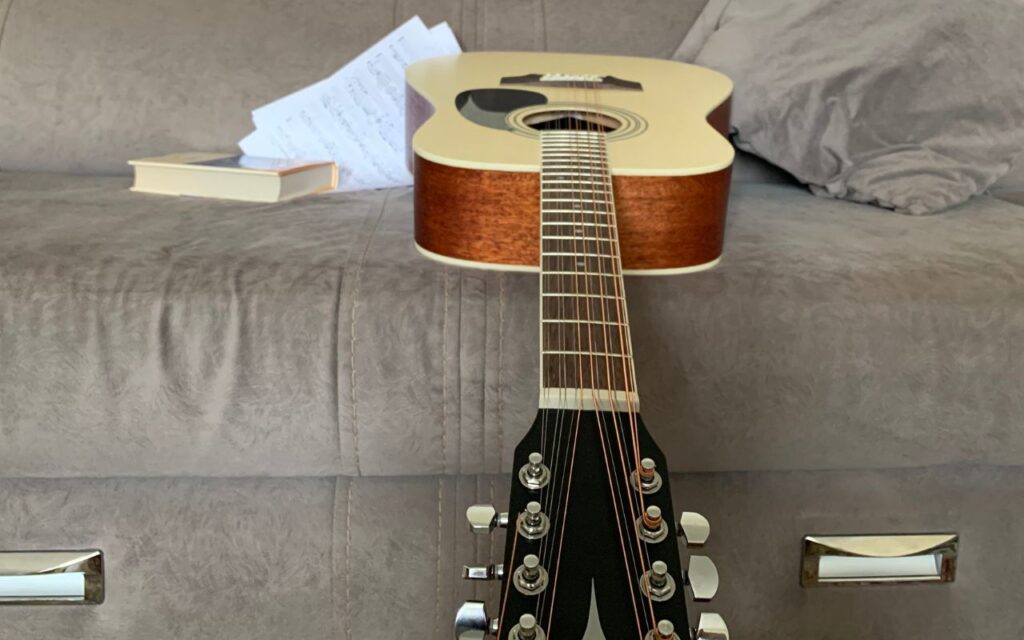
Typically, the strings of the lower four courses are tuned in octaves, with those of the upper two courses tuned in unison.
The gap between the strings within each dual-string course is narrow, and the strings of each course are fretted and plucked as a single unit.
Twelve-string guitars are most commonly used in folk, blues, and rock music. Their rich, full sound and complex harmonic overtones make them well-suited for these genres. Some specific styles in which twelve-string guitars are often used include:
- Folk music:
Twelve-string guitars are a popular choice for folk musicians due to their ability to create a full, resonant sound that fills an acoustic space. They are often used to accompany singing and to play lead melodies. - Blues music:
Twelve-string guitars are also popular in blues music, where their rich, gritty sound adds depth and emotion to the music. They are often used to create slide guitar textures and to play bluesy melodies and solos. - Rock music:
Twelve-string guitars have been used by many rock bands, from The Byrds and The Beatles in the 1960s to R.E.M. and U2 in the 1980s and 1990s. Their ability to create a thick, textured sound makes them well-suited for rock anthems and power ballads.
In addition to these main genres, twelve-string guitars can also be used in a variety of other styles, including pop, country, and jazz. They can be a versatile instrument that can add a unique and interesting sound to any musical setting.
Twelve-string guitars are not as suitable for beginners as other types of guitars, such as the classical guitar or the steel-string acoustic guitar. The extra strings and the wider neck can make it more difficult to handle and learn proper technique. However, with practice, players of all levels can learn to play the twelve-string guitar and enjoy its unique sound.
Twelve-string guitars range in price from around $200 for an entry-level beginner model to over $2,000 for a high-end professional model. The price of a twelve-string guitar depends on a number of factors, including the quality of the wood, the craftsmanship, and the brand.
Here is a table summarizing the key information about twelve-string guitars:
| Feature | Details |
|---|---|
| Type of guitar | Acoustic |
| Strings | 12, tuned in octaves |
| Body | Solid |
| Tonality | Full, rich, with complex harmonic overtones |
| Styles of music | Folk, blues, rock, pop, country, jazz |
| Level of players | Intermediate to advanced |
| Typical price range | $200 – $2,000 |
15. Extended-Range Guitars
Extended-range guitars are a broader category of electric guitars that have more than six strings. They are designed to expand the range of notes that can be played on a guitar, allowing for lower tunings and more complex chord voicings.
Extended-range guitars are popular among metal guitarists and other musicians who want a heavier, more aggressive sound.
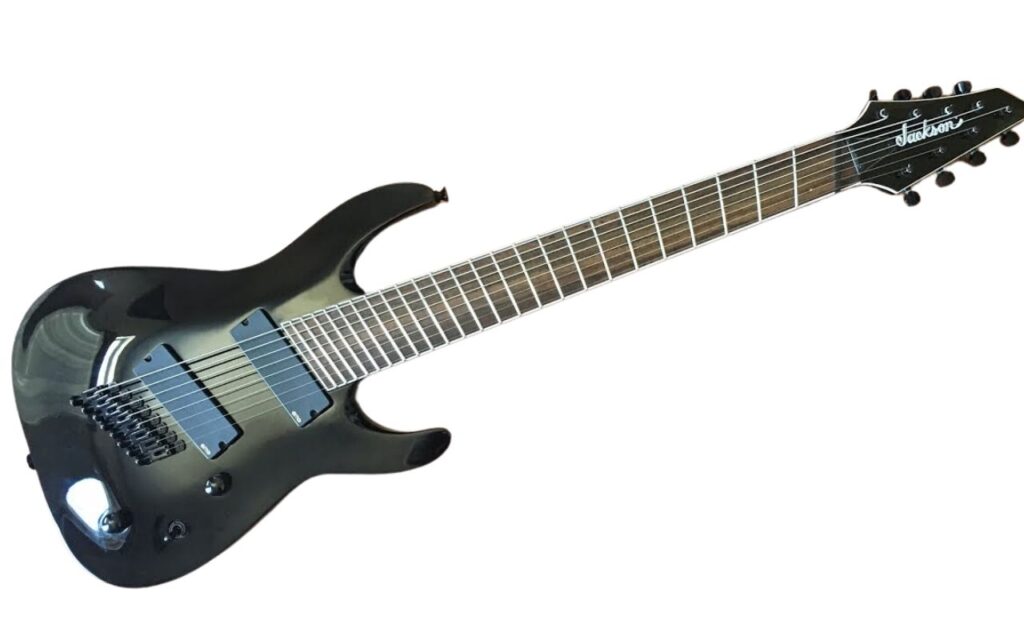
Extended-range guitars are most commonly used in metal music, where their lower tunings and extended range provide a heavier, more powerful sound. They are also used in other genres, including:
- Progressive rock:
Progressive rock bands often use extended-range guitars to create complex, layered textures. - Fusion jazz:
Fusion jazz guitarists sometimes use extended-range guitars to explore new harmonic possibilities. - Alternative rock:
Some alternative rock bands use extended-range guitars to create a unique, experimental sound. - Djent:
Djent is a subgenre of heavy metal that emphasizes low tunings and polyrhythmic drumming. Extended-range guitars are a common instrument in djent music.
In addition to these main genres, extended-range guitars can also be used in a variety of other styles, including blues, rockabilly, and funk. They are versatile instruments that can add a unique and powerful sound to any musical setting.
Extended-range guitars are not as suitable for beginners as other types of guitars, such as the classical guitar or the steel-string acoustic guitar. The extra strings and the wider neck can make it more difficult to handle and learn proper technique. However, with practice, players of all levels can learn to play the extended-range guitar and enjoy its unique sound.
Extended-range guitars range in price from around $500 for an entry-level beginner model to over $5,000 for a high-end professional model. The price of an extended-range guitar depends on a number of factors, including the quality of the wood, the craftsmanship, the brand, and the features of the pickups and electronics.
Here is a table summarizing the key information about extended-range guitars:
| Feature | Details |
|---|---|
| Type of guitar | Electric |
| Strings | More than six |
| Body | Solid |
| Tonality | Heavy, powerful, with extended range |
| Styles of music | Metal, progressive rock, fusion jazz, alternative rock, djent, blues, rockabilly, funk |
| Level of players | Intermediate to advanced |
| Typical price range | $500 – $5,000 |
Final Words
In this blog post, we have explored the different types of guitars available, delving into their unique characteristics and the musical genres they are best suited for.
We have also discussed the level of difficulty associated with each type, providing guidance for aspiring guitarists as they embark on their musical journey.
As we conclude our exploration, we hope that you have gained a deeper understanding of the world of guitars and the diverse roles they play in the realm of music.
Whether you are a seasoned musician or a curious beginner, we encourage you to continue learning about these fascinating instruments and to embrace the joy of playing and creating music.
Remember, the guitar is more than just an instrument; it is a gateway to self-expression, a tool for connecting with others, and a source of endless musical possibilities. So pick up your guitar, strum its strings, and let the music flow.
FAQs
What is the difference between a classical guitar and a steel-string acoustic guitar?
A classical guitar has nylon strings and a wider neck, while a steel-string acoustic guitar has steel strings and a narrower neck.
What is a resonator guitar?
A resonator guitar is a type of acoustic guitar with a metal body and a resonator cone that produces a loud, metallic sound.
What is a twelve-string guitar?
A twelve-string guitar is a steel-string guitar with 12 strings in six courses, which produces a thicker, richer sound than a standard six-string guitar.
What is an extended-range guitar?
An extended-range guitar is an electric guitar that has more than six strings. They are designed to expand the range of notes that can be played on a guitar, allowing for lower tunings and more complex chord voicings.
What is the best type of guitar for beginners?
The best type of guitar for beginners is a classical guitar or a steel-string acoustic guitar with a narrow neck. These guitars are easier to handle and learn proper technique on.
What is the most popular type of guitar?
The most popular type of guitar is the electric guitar. It is a versatile instrument that can be used to play a wide variety of genres, from rock and blues to jazz and country.
What is the most expensive type of guitar?
The most expensive type of guitar is a high-end professional model made from rare woods and with custom features. These guitars can cost thousands of dollars.
How do I choose the right guitar?
The best way to choose the right guitar is to consider your musical style, your level of experience, and your budget. You should also try out a few different guitars to see which one feels most comfortable to you.
What are some tips for learning to play the guitar?
Some tips for learning to play the guitar include taking lessons, practicing regularly, and finding a good teacher or mentor.
What are some resources for learning to play the guitar?
There are many resources available for learning to play the guitar, including books, websites, and online courses. You can also find guitar teachers in your local area.
I hope these FAQs are helpful. Please let me know if you have any other questions.


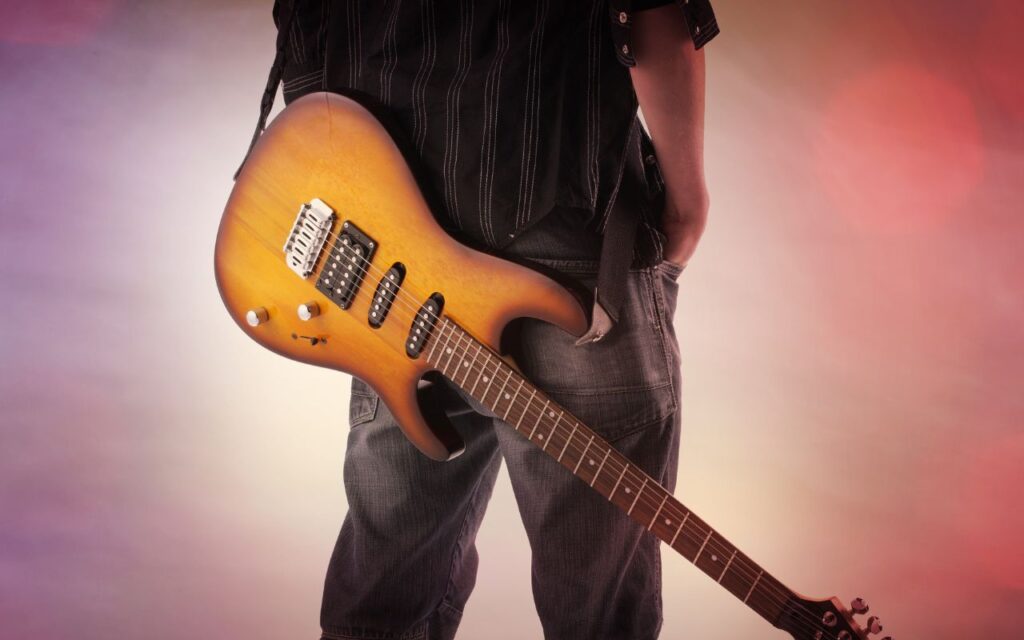

Pingback: Guitar Buying Guide - Find Your Perfect Guitar [November 2023]
Pingback: How A Guitar Works - Complete Mechanism [November 2023]